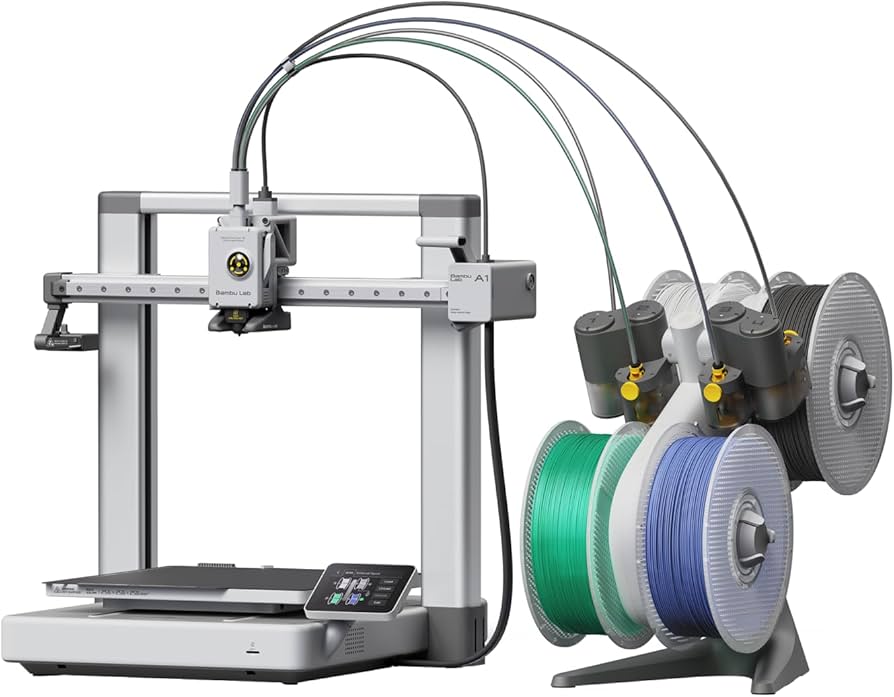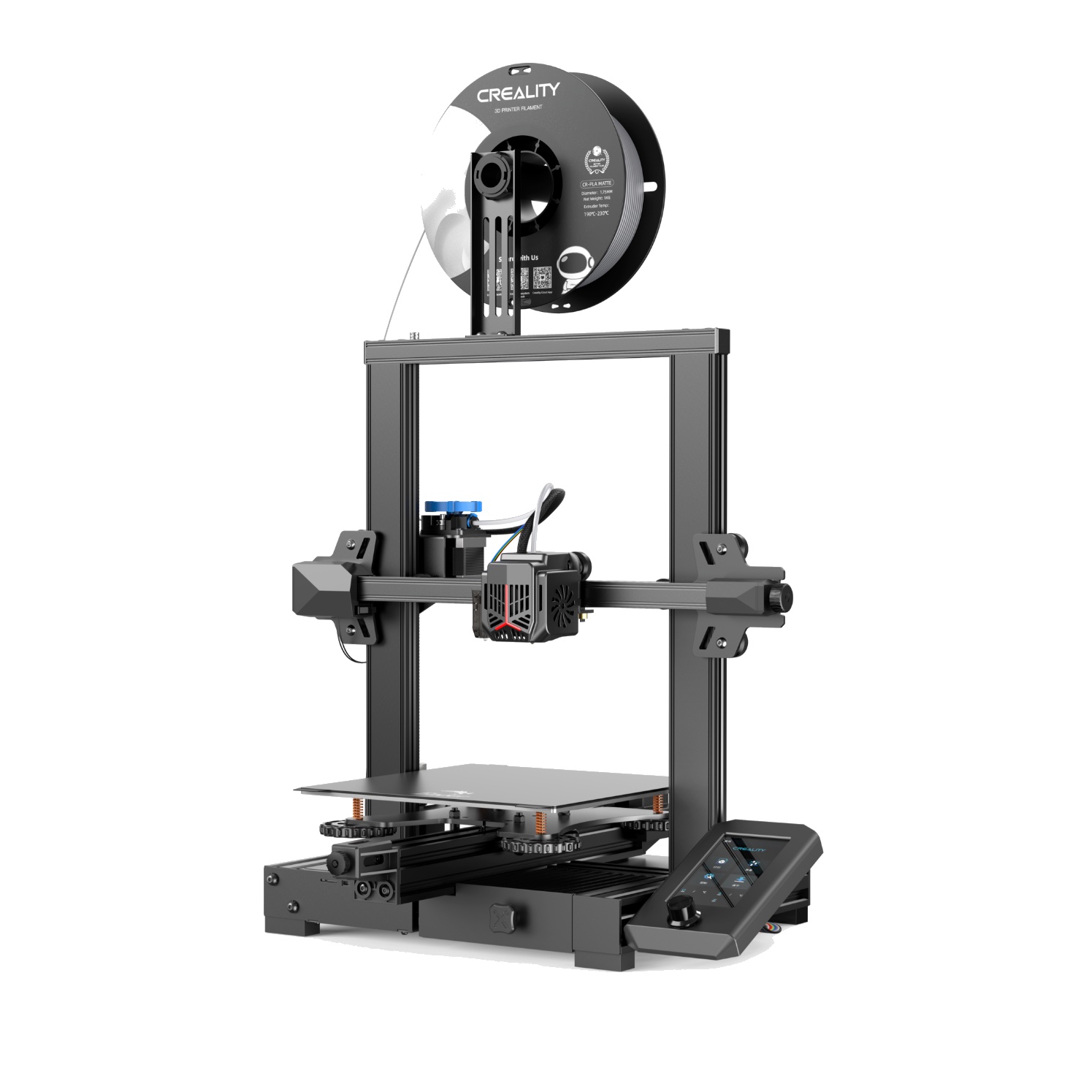Compare A1 vs Ender 3 V2 Neo
Comparison between the best 3D printers
Choose the best 3D printer at the best price. The cheapest 3D printers are here.
Buy a 3D printer here with 3D Fila.
 |
 |
|
| Model | A1[BUY A1] |
Ender 3 V2 Neo[BUY Ender 3 V2 Neo] |
| Printing Material | Filament | Filament |
| Buy Filament for Bambu Lab A1 | Buy Filament forCreality 3D Ender 3 V2 Neo | |
| Estimated price | $700,00 | $310,00 |
| Manufacturer | Bambu Lab | Creality 3D |
| Release Year | 2023 | 2022 |
| Print Volume [mm] | 256x256x256 | 220x220x250 |
| Printer Size [mm] | 385x410x430 | 438x424x472 |
| Weight [kg] | 8,3 | 9,8 |
| Power Loss Recovery | YES | YES |
| Enclosed printer | NO | NO |
| Bed Leveling | Automatic | Automatic |
| Filament End Sensor | YES | YES |
| Bed type | Heated | Heated |
| Power supply system | Direct Drive | Bowden |
| Standard nozzle | 0,4 | 0,4 |
| Maximum Nozzle Temperature [°C] | 300 | 260 |
| Maximum Bed Temperature [°C] | 100 | 100 |
| Maximum printing speed [mm/s] | 500 | 80 |
| Filament holder | YES | YES |
| Camera for supervision | YES | YES |
| Recommended filaments | PLA, PETG, TPU, PVA | PLA, PETG |
| Recommended slicers | SuperSlicer, PrusaSlicer, Cura, OrcaSlicer | Cura, Simplify, Slic3r, IdeaMaker |
| Maximum Resolution [mm] | 0,1 | 0,1 |
| Processor | 4.2.2 mainboard | |
| Display | Touchscreen 3,5 | Display touchscreen 4,3'' |
| Power Supply | 350 W | |
| Connectivity | Wi-Fi, Bambu-Bus, Cartão Micro SD | SD / USB |
| Operating systems | Windows, Linux, Macbook | Windows, Mac, Linux |
| Date of registration in the system | 2024-07-17 | 2022-12-09 |
| Release date | 2023 | 2022 |
| Extra features | The BambuLab A1 printer features fully automatic calibration, multi-color printing with the AMS system, active flow rate compensation, quick nozzle change with a clip, active motor noise cancellation, a build volume of 256x256x256 mm³, a maximum extruder temperature of 300°C, and a heated bed of up to 100°C. In addition, it has high precision, a machine health management system and an intuitive 3.5-inch touchscreen interface. | The Ender 3 V2 Neo printer stands out for its automatic bed leveling with the CR Touch system, ensuring high-quality initial layers. It features an all-metal Bowden extruder for increased durability and improved filament handling. Its flexible, PC-coated magnetic build plate makes it easy to remove prints and is durable and easy to clean. It also includes a new user interface with model preview and an updated gantry design. The Ender 3 V2 Neo maintains the same build volume and temperatures as the previous version, supporting popular filaments such as PLA and ABS. It features a quiet 32-bit mainboard and additional features such as a filament sensor, print recovery, simple 3-step assembly, an integrated toolbox, and belt tensioners. |
| Support for multiple colors and materials (AMS and CFS) | YES | NO |
Notes * |
||
| Cost-benefit | 7 / 10 | 6 / 10 |
| Hardware | 4.2 / 10 | 2.4 / 10 |
| Tela | . | . |
| Print volume | 4 / 10 | 3 / 10 |
| Performance | 4 / 10 | 0 / 10 |
| [BUY A1] | [BUY Ender 3 V2 Neo] |
Conclusion |
| In comparing the Bambu Lab A1 and the Creality 3D Ender 3 V2 Neo, it is evident that both printers cater to different user needs and priorities in the 3D printing landscape. The Bambu Lab A1, with its higher price point, offers advanced features such as a larger print volume, significantly higher maximum printing speed, and the capability for multi-color printing. Its design incorporates modern technology like active flow rate compensation and a user-friendly touchscreen interface, making it an excellent choice for users seeking high precision and efficient multi-material printing. On the other hand, the Ender 3 V2 Neo presents a more budget-friendly alternative with solid performance for entry to mid-level users. It offers reliable automatic bed leveling, a durable Bowden extruder, and a flexible print surface, making it a practical choice for hobbyists and those new to 3D printing. While it does not match the A1 in terms of speed and advanced features, it still provides quality prints and essential functionalities. Considering the overall cost-benefit and intended usage, the Bambu Lab A1 is ideal for those who require a versatile, high-performance printer with advanced capabilities and are willing to invest more. Conversely, the Ender 3 V2 Neo remains a compelling option for users prioritizing value and simplicity without needing the advanced features found in higher-end models. Ultimately, the choice between these two printers should reflect the user's specific needs—whether it be versatility and speed or cost-effectiveness and reliability. |

